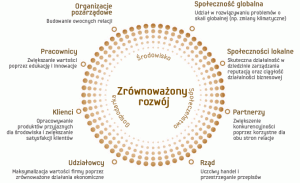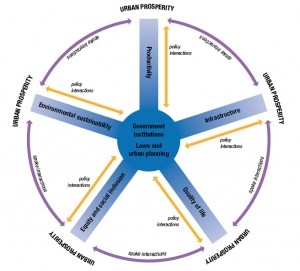Urban sustainable development is not only about preserving the greenery in the concrete surroundings. It is also about sustainable construction that provides inhabitants with comfort, does not ruin their budgets or hurt the urban spatial plan.
Thinking of tomorrow is the core of sustainable construction. What we are building today, must serve the future well, that’s clear, but not only – the building process must respect natural environment. Therefore sustainable construction has a clear-cut aim: to create buildings friendly to the environment and people. From today until… always.
One of the key issues is reducing energy consumption – it’s production takes great amounts of natural resources and generates environmental pollution. The reduction on the other hand would diminish waste by-products. Electricity, heating and sewage are produced in huge amounts in cities and have a negative influence also on climate changes.
Actions taken with an aim to diminish the amount of waste and energy consumption include providing the cities with an access to green areas. Well-planned settlements have distinct parks, squares and bicycle lanes that encourage to leave a car at home and get around the city in a more ecological way.
More green areas and fewer cars (together with reduced energy consumption) is a milestone in reaching health objectives – for a human being fresh air and active lifestyle means better physical and mental state. In the long term, he will not need to knock the doctor’s office door as often as his peer – a declared enemy of physical activity that lives on a cloud of smog in his city.
Sustainable architecture is also about the cutting-edge construction technologies – ecological, innovative and environment-friendly that at the same time provide greater comfort for its users. A perfect solution is rational space use (which makes heating and wiring less complicated, expensive or energy-intensive), renewable energy sources (clever rain water containers, solar batteries, modern incineration plants) and waste segregation.
As much as unlikely it may seem, sustainable construction has an economic dimension: a structure of old technologies, with obsolete solutions or high-energy design is a far cry from being cost-effective. Exploitation cost of an intelligent, self-sufficient and sustainable building throughout its life cycle will surely be much more cost-effective than its allegedly cheaper yet non-ecological version.
The appearance of a building is undoubtedly an important aspect to each of us. Nice-looking and well-matched buildings make harmonious cities and people naturally enjoy being in nice surroundings. Of course, from the perspective of its dwellers, house comfort and health outbalance its look – the building must be warm in winter and cool in summer, must be noise-resistant and provide the sense of safety.
So constructing sustainable architecture is not only about providing comfort for its users. Better transport connections and green areas attract investors, which translates into new jobs and well-being of all.
Sustainable and harmonious architecture that even today some investors still do not take for granted, will soon be the only option, not an alternative. Thus our cities will be a better place to live.






